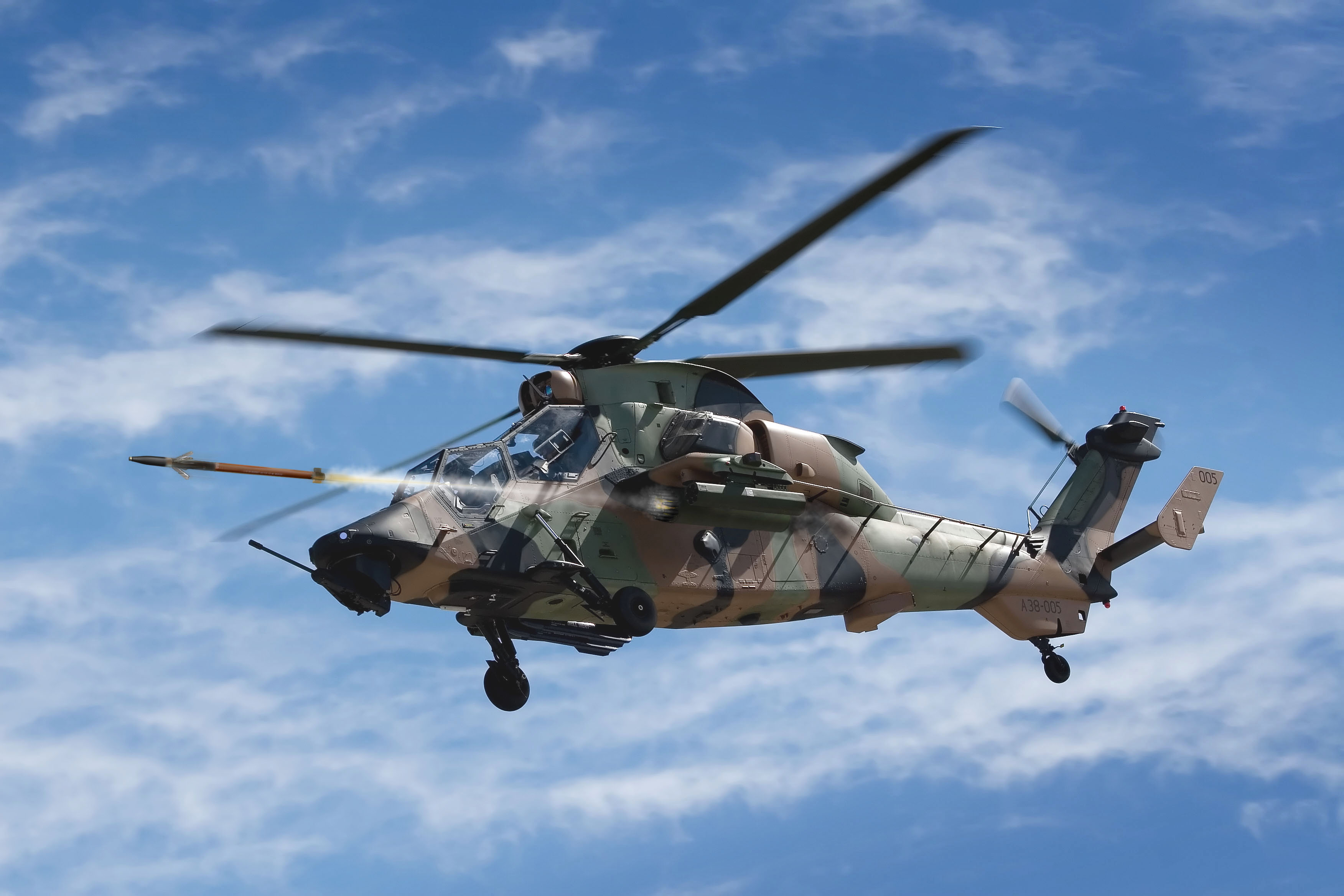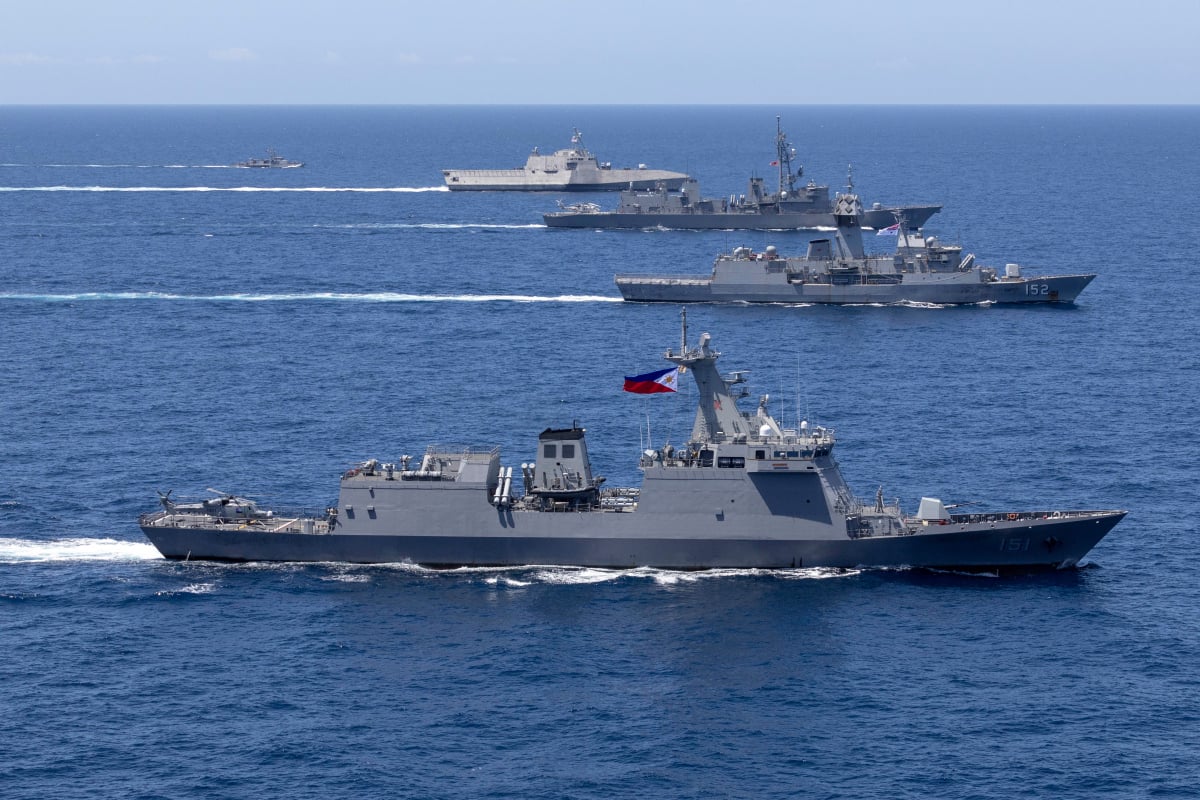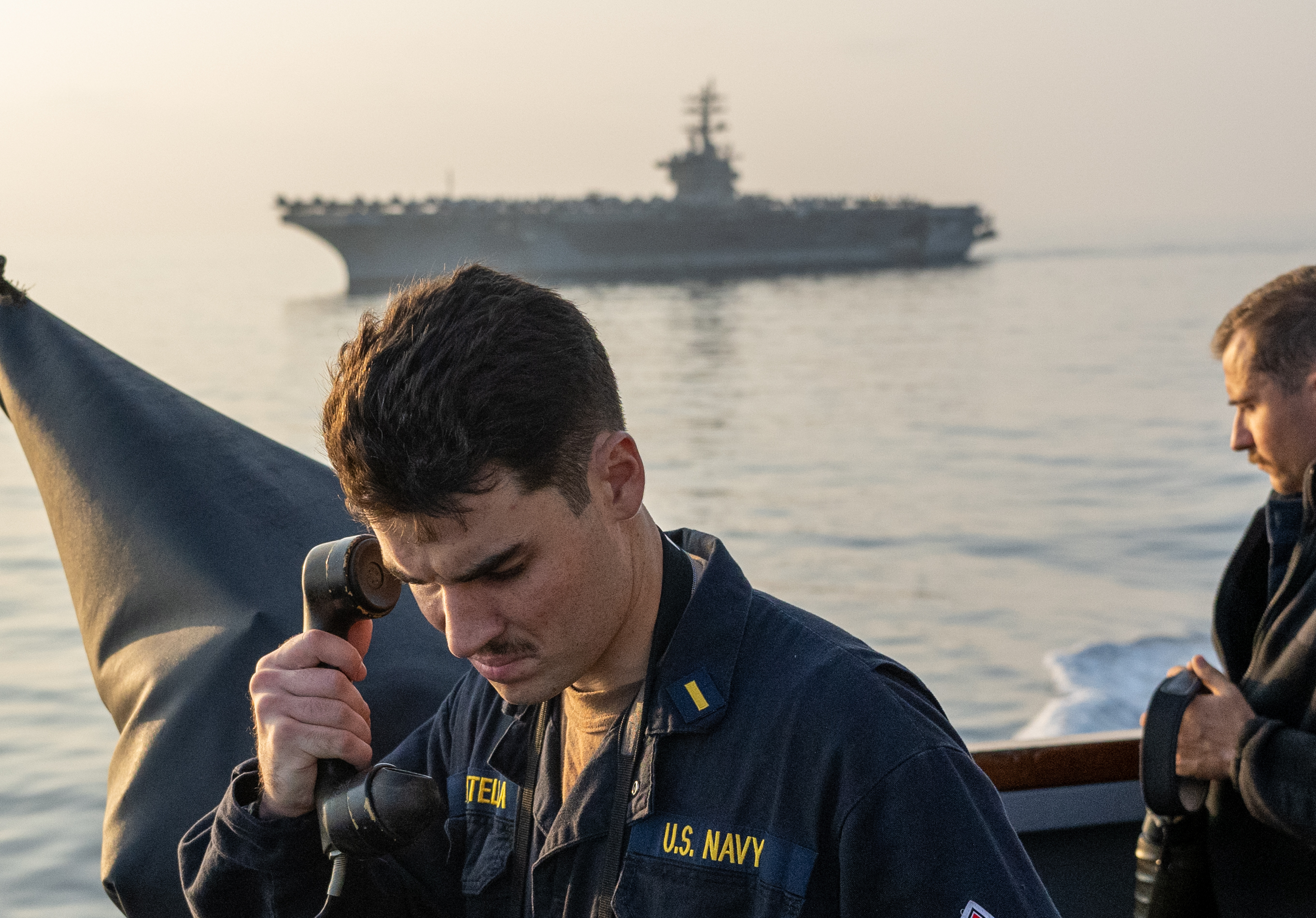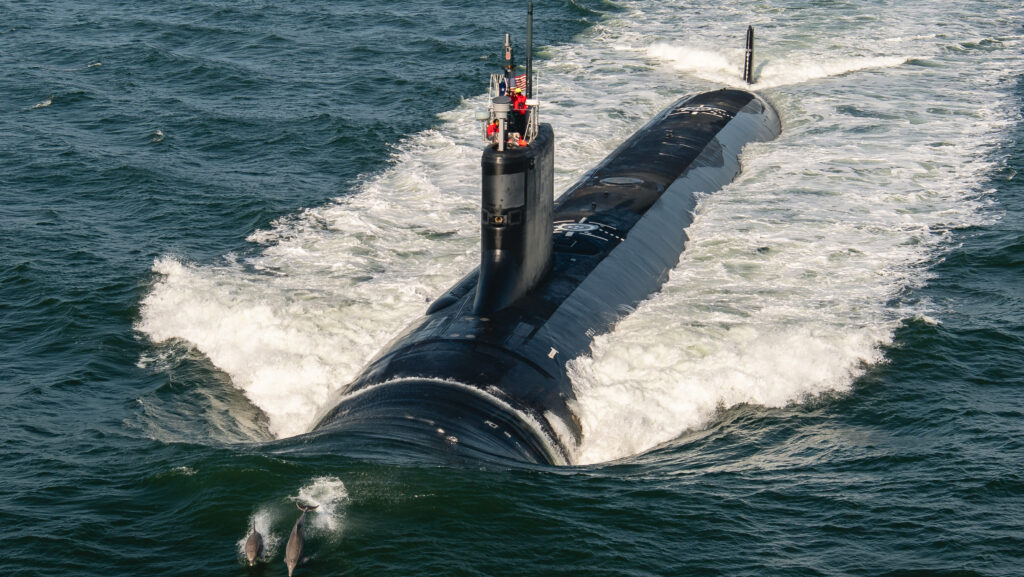
BAE Systems successfully demonstrated its Advanced Precision Kill Weapon System (APKWS) from an Airbus Tiger Armed Reconnaissance Helicopter for the first time in testing with the Australian army, going 10 for 10 in live-fire flight tests, a company official told USNI News.
The APKWS guidance system, which screws into unguided rockets to add a laser-designation capability, hit all 10 stationary targets within a meter of the laser spot, according to a BAE release. The test shots, conducted in November and recently announced, were conducted in extreme heat in Australia’s Northern Territory from ranges of 1,500 to 4,500 meters.
“To do the flight testing and go perfect 10 for 10 on a new rocket motor, a new warhead, a new launcher and a new platform, the Tiger armed reconnaissance helicopter, was very exciting for us,” David Harrold, director of precision guidance solutions at BAE Systems, told USNI News on April 14.
“Really it just continues to prove the flexibility and reliability and adaptability of the system. It literally plugged into a new system and on a new platform and we were perfect in our execution.”
BAE Systems and the Australian army performed ground-based testing in August 2014 and went seven for seven with its test shots. Harrold said Australia is interested in additional testing this year, which will probably use the same Forges de Zeebrugge (FZ) rocket motor but potentially a different warhead.
In testing with the U.S. Navy, the APKWS has plugged into the Hydra 70 rocket and has been launched off a variety of rotary and fixed-wing platforms. Since full-rate production began in 2012, the Navy and Marine Corps have used the mid-body guidance section from their Sikorsky MH-60R and Bell UH/AH-1 helicopters.
The Australia tests, therefore, could open up new markets for BAE Systems, since APKWS has proved successful both on the Tiger ARH and the FZ motor.
Harrold said the company is in increasingly mature talks with Australia about buying the system for its army and for its navy’s MH-60 fleet. He said Jordan was the first international customer, and the company is working with eight to 10 other international customers now, including Iraq.
The U.S. Army may also help boost international interest in the system, as the service is nearing a purchase of APKWS for its Boeing AH-64 Apache fleet.
“The U.S. Army is very close to bringing the APKWS to its inventory, so I’m confident that within the first half of this year the Army is going to buy APKWS from the Navy and put it on their Apaches,” he said.
Harrold said the Army contract would be important because so many other militaries use the Apache and are waiting to see how it works for the Army. Harrold said he expects the Army will make a small purchase initially to get it out into the fleet and get feedback, and that user input plus analysis of potential consumption rates would drive future contracts.
The House Armed Services tactical air and land subcommittee noted in its section of the Fiscal Year 2016 National Defense Authorization Act that “the Joint Requirements Oversight Council has recently re-validated the Army Operational Requirements Document for the APKWS, and notes that there is also a validated Army operational needs statement (ONS) for additional APKWS for use in the Islamic Republic of Afghanistan. The committee understands the Army plans to leverage the Navy APKWS contract to procure Army APKWS rockets to address the ONS. The committee commends the Army for taking the necessary actions to rapidly field this capability to address an immediate warfighter need; however, the committee remains concerned over the absence of a long-term acquisition strategy for guided Hydra rockets.”
The committee also noted that there are more capable warheads in the inventory that could add to the lethality of the APKWS-guided weapon, so the committee asked the defense department to provide information on near- and long-term acquisition and fielding strategies for guided rockets.
Because the APKWS screws into the middle of a 2.75-inch rocket, the military services could opt to use a different warhead or rocket motor. Harrold said the idea of APKWS was to plug into the existing Hydra rocket with no modifications needed, but the Army or Navy could opt to make upgrades and the APKWS would still work. For example, he said the range of the system is advertised as 1.5 to 5 kilometers, but the seeker can actually see out to more than 14km. The limiting factor is the current Hydra rocket motor, and the APKWS would still be accurate with a much more powerful motor if the military chose to make that investment.
In addition to further testing with the Australian army, Harrold said BAE Systems hopes to do more testing with the APKWS on the Air Force’s Lockheed Martin F-16 fighter. Early testing went well, and Harrold said that qualifying on the platform and getting into the Air Force inventory would be significant now and could spark discussions about future testing on the Lockheed Martin F-35 Lightning II Joint Strike Fighter.
“There are lots of F-16s out there around the world; if we can bring them into the U.S. Air Force inventory that will do the same thing that the US. Army Apache did, have the same impact,” Harrold said.
The system has also been tested on the Northrop Grumman MQ-8 Fire Scout unmanned helicopter, and Harrold said the Navy is interested in doing further work to pair the two.





